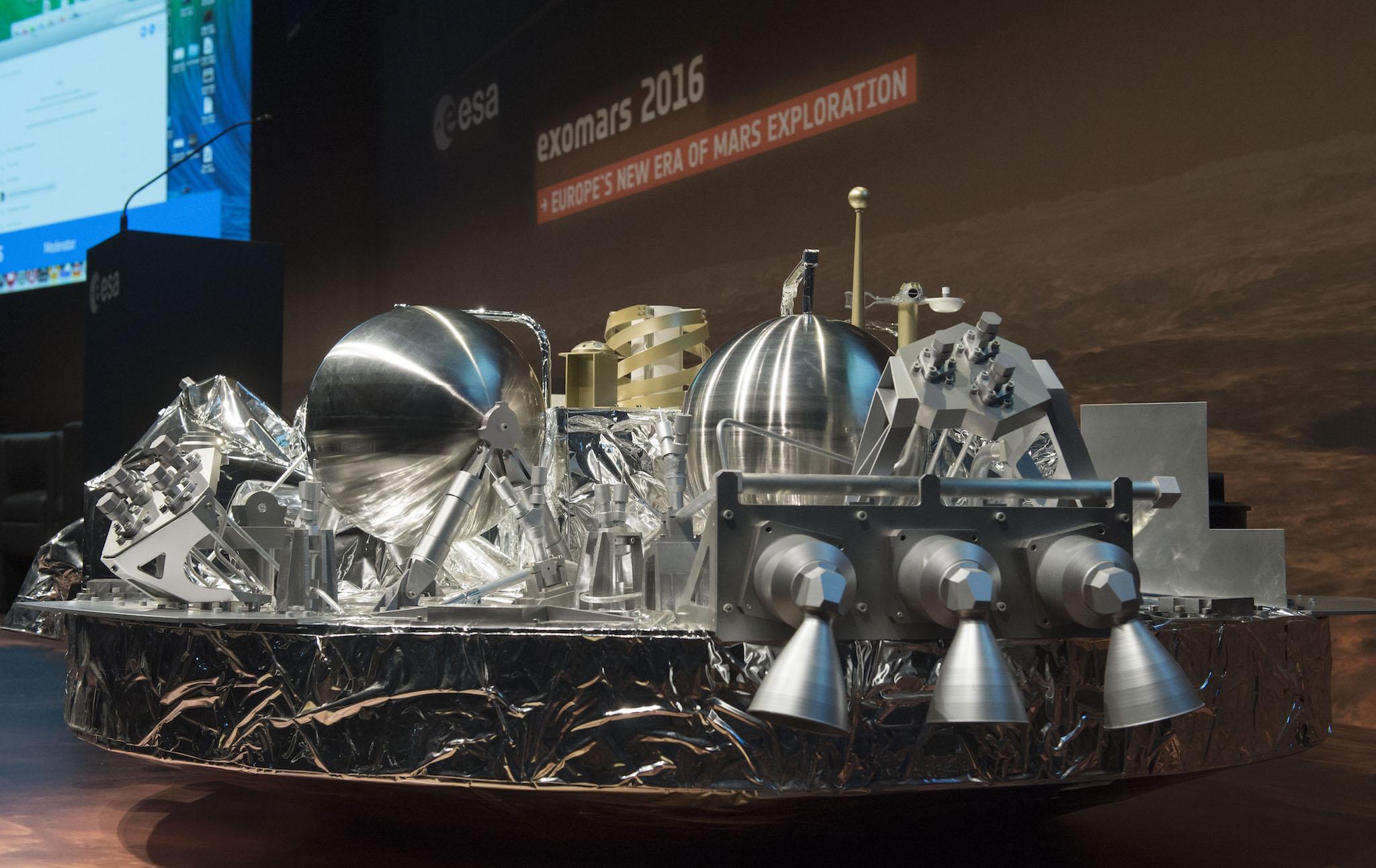ExoMars mission: Schiaparelli robot appears to be lost on the Mars surface, European Space Agency says
The lander appeared to make it safely through the harsh Martian atmosphere. But something seems to have gone wrong when it landed on the planet

Your support helps us to tell the story
From reproductive rights to climate change to Big Tech, The Independent is on the ground when the story is developing. Whether it's investigating the financials of Elon Musk's pro-Trump PAC or producing our latest documentary, 'The A Word', which shines a light on the American women fighting for reproductive rights, we know how important it is to parse out the facts from the messaging.
At such a critical moment in US history, we need reporters on the ground. Your donation allows us to keep sending journalists to speak to both sides of the story.
The Independent is trusted by Americans across the entire political spectrum. And unlike many other quality news outlets, we choose not to lock Americans out of our reporting and analysis with paywalls. We believe quality journalism should be available to everyone, paid for by those who can afford it.
Your support makes all the difference.Mission controllers appear to have lost contact with a tiny craft that was Europe's big hope for Mars exploration.
The paddling pool-sized Schiaparelli lander appeared to have made its way safely through the harsh atmosphere of Mars and on to its surface. But something seems to have gone wrong while it did so – and mission controllers are now unable to speak with it.
Although the lander sent communications to its mothership, the Trace Gas Orbiter (TGO), on its descent, the signal was lost before touchdown.
“We are not in a position yet to determine the dynamic condition at which the lander touched the ground,” European Space Agency head of solar and planetary missions, Andrea Accomazzo, told a webcast press briefing at mission control in Darmstadt, Germany.
The failure of the mission has ghostly echoes of the Beagle 2, Europe's last attempt to science on the Martian surface. That arrived at the red planet on Christmas Day in 2003 – but like Schiaparelli it was hit by problems when it landed, and couldn't communicate with Earth.
The lander had been carrying with it instruments meant for analysing the Martian atmosphere and helping understand whether it might be possible that life has ever existed there. But its main purpose was as a test run – some of the same landing technologies that were meant to carry it down safely will be used in a much larger 2020 mission, which will send a large rover to Mars.
Some understanding will still come from Schiaparelli. Before it lost contact with Earth, it managed to send back around 600 megabytes of data, and that information will be used both to understand more about Mars and to inform future robot trips there.
Schiaparelli had travelled for seven years onboard the joint European-Russian TGO to come within 600,000 miles of Mars on Sunday, when it set off on its own mission to reach the surface.
The pair comprised phase one of the ExoMars mission through which Europe and Russia seek to join the United States in probing the Martian surface.
The TGO was successfully placed in Mars orbit on Wednesday, to cheers and applause from ground controllers some 100 million miles away. Its task, starting in 2018, will be to sniff atmospheric gases potentially excreted by living organisms, however small or primitive.
Schiaparelli's landing, in turn, was designed to inform technology for the bigger and more expensive rover scheduled for launch in 2020 – the second phase and high point of ExoMars. The six-wheel rover will be equipped with a drill to look for clues of life, past or present, up to a depth of two metres.
Additional reporting by agencies
Join our commenting forum
Join thought-provoking conversations, follow other Independent readers and see their replies
Comments